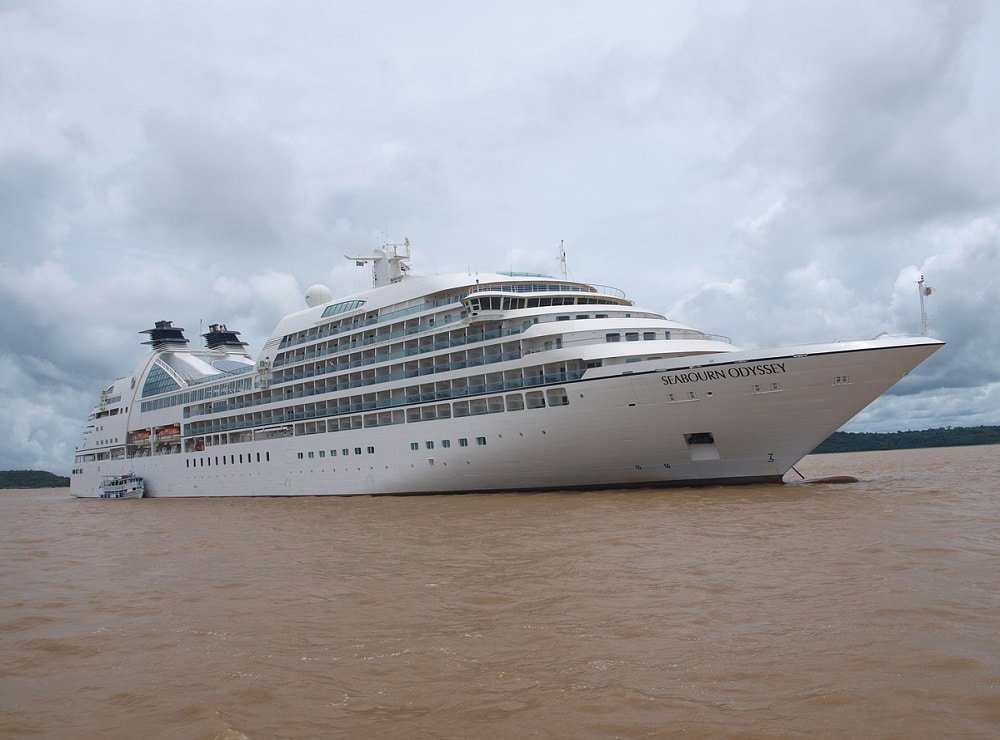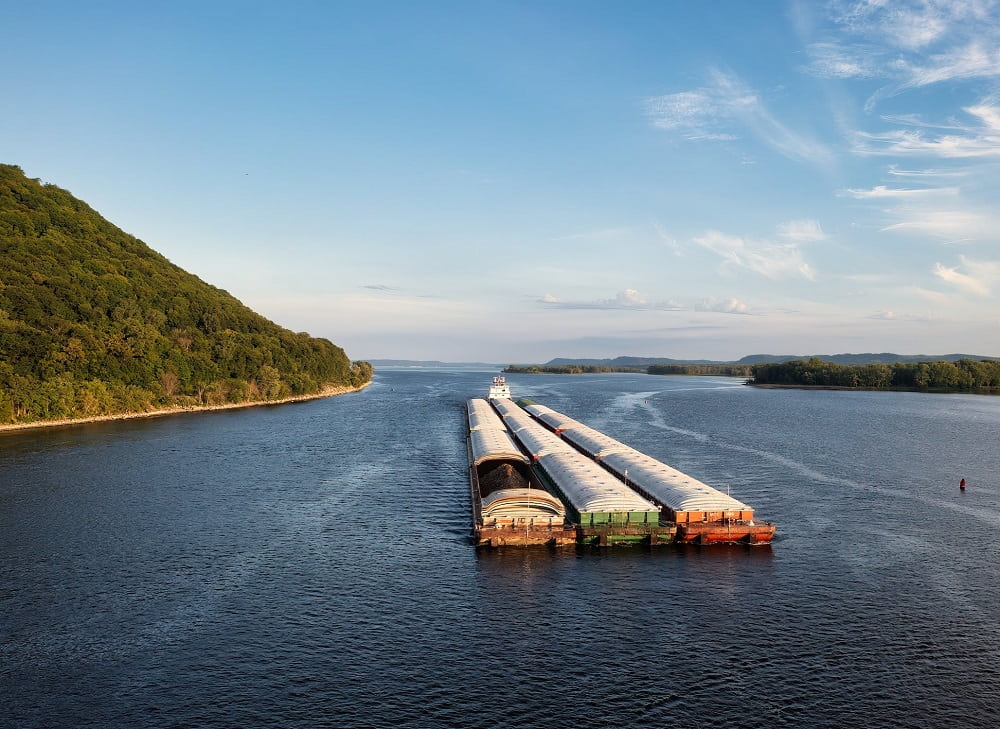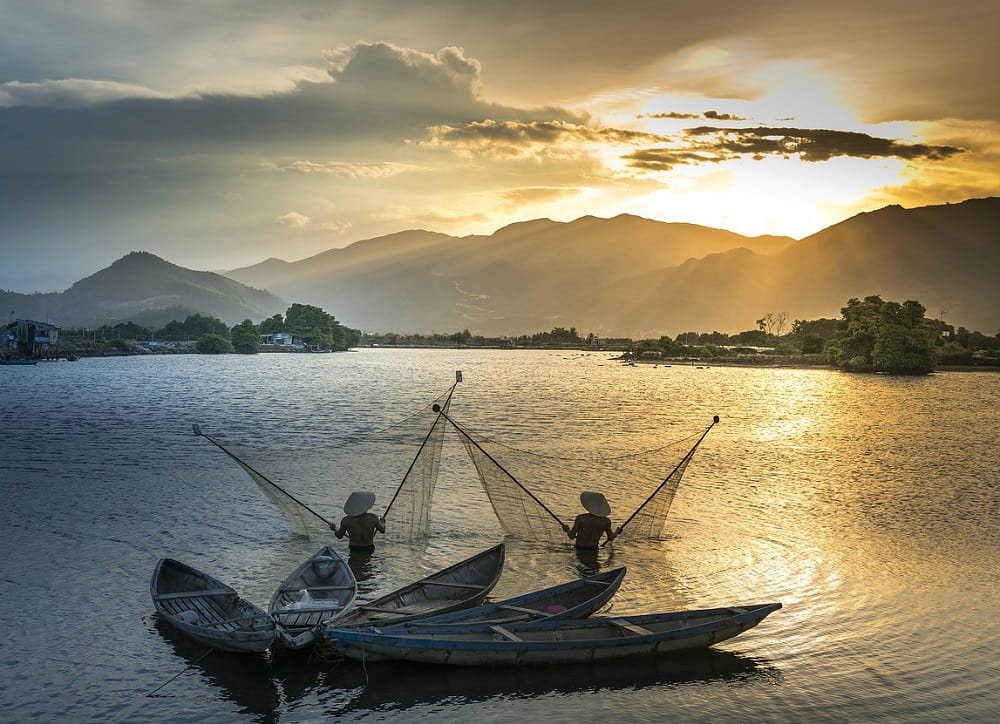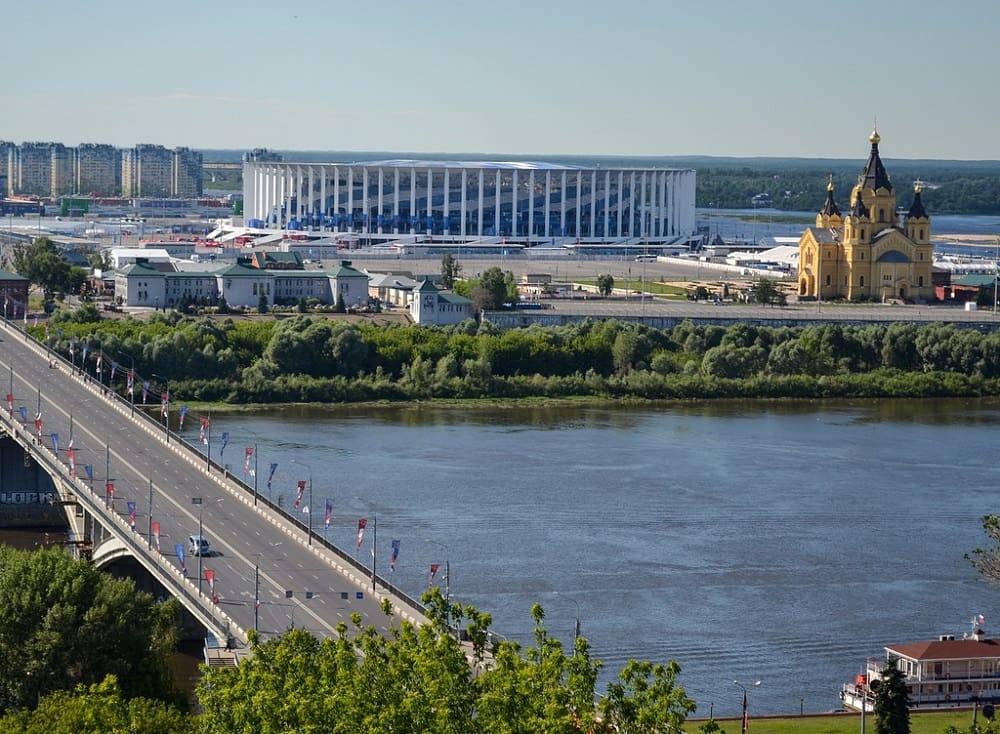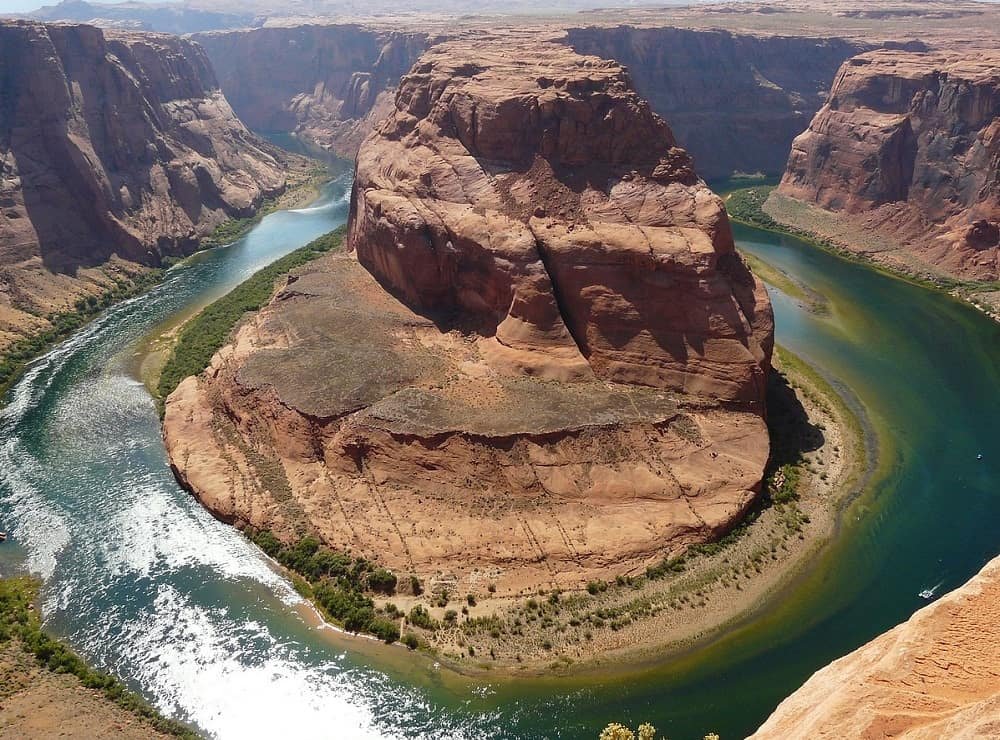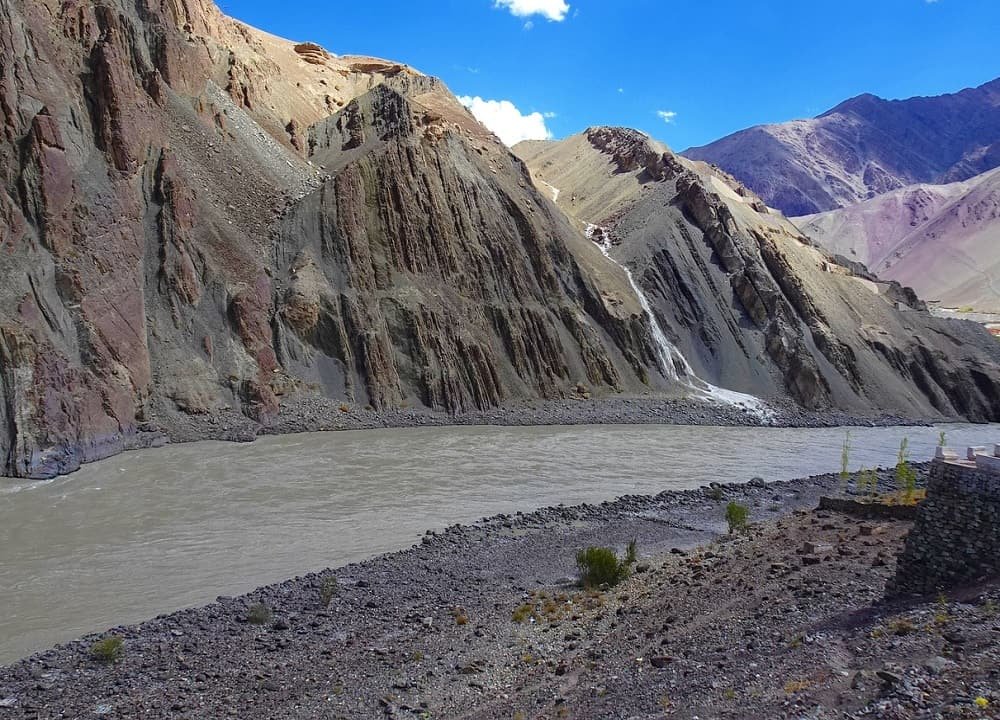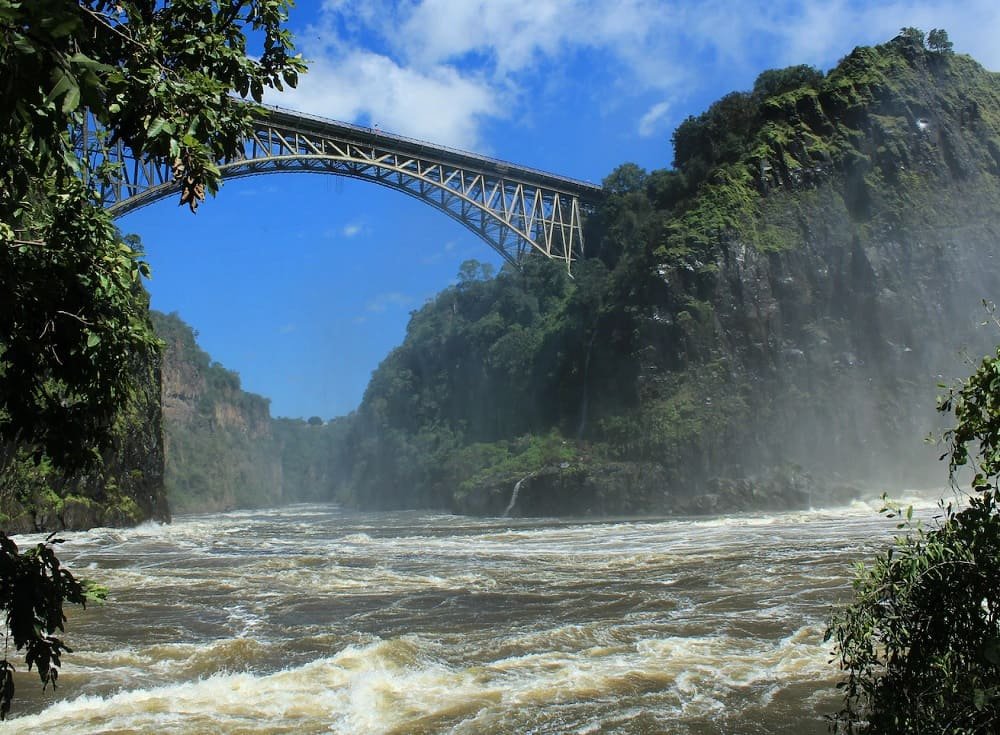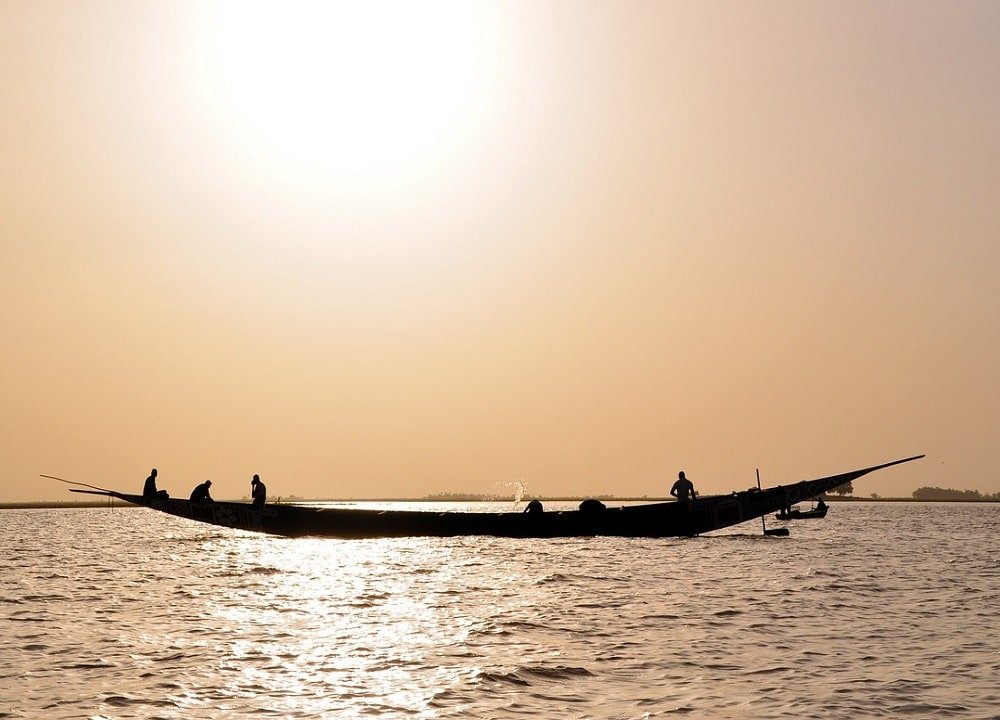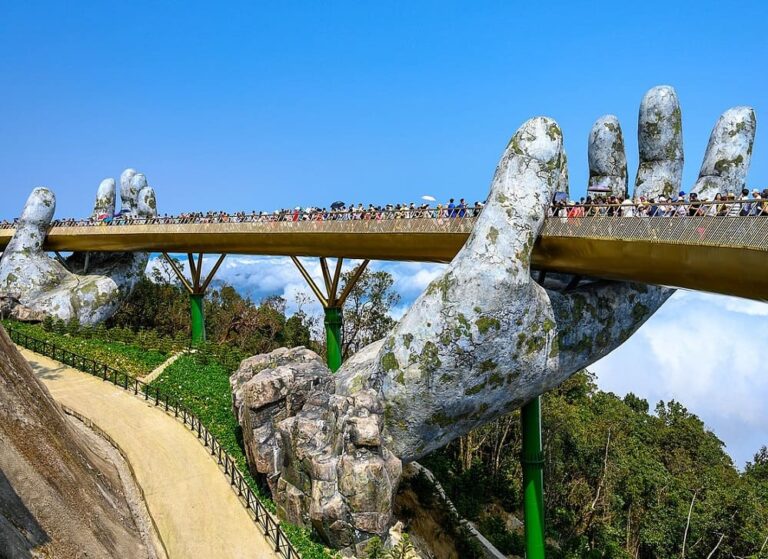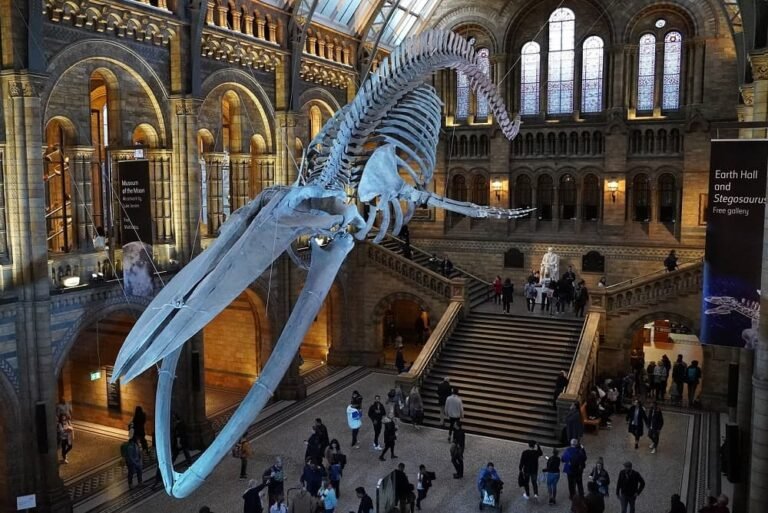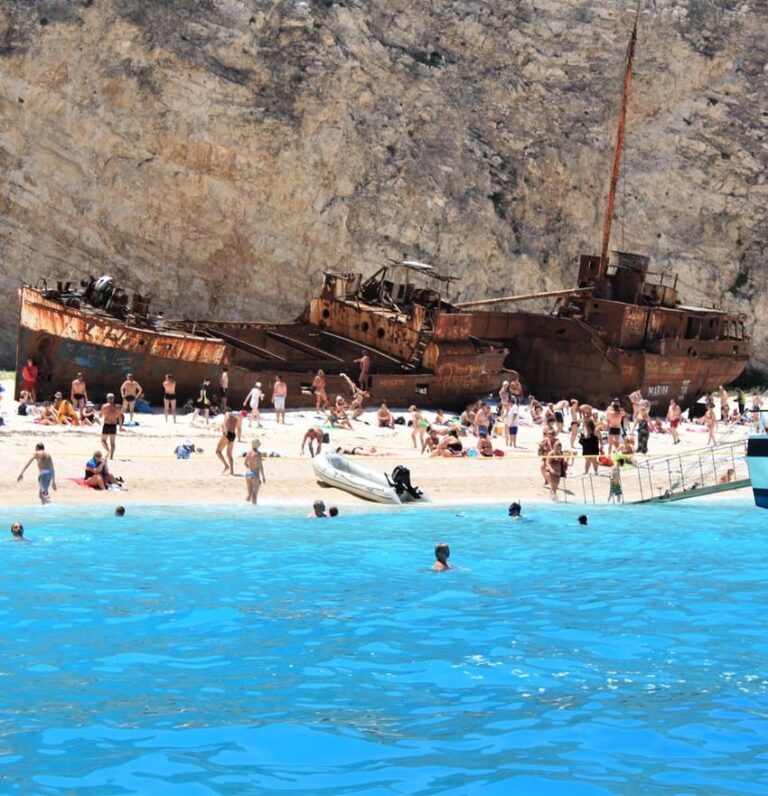15 Famous Rivers Around the World: Nature’s Lifelines
Last Updated on 12th June 2023 by admin
Rivers are extraordinary natural features that have shaped the landscapes, cultures, and histories of our planet. Our planet is blessed with many rivers, some of them are the most famous rivers because of their importance for our earth. They serve as lifelines, providing essential resources and habitats for diverse ecosystems. Rivers hold immense significance for both nature and humanity. They act as vital sources of freshwater, supporting ecosystems and providing drinking water for communities.
Additionally, rivers facilitate irrigation systems, enabling agricultural activities and ensuring food security. They serve as transportation routes, fostering trade and connecting different regions. Moreover, rivers have often played crucial roles in the development of civilizations, serving as cultural, economic, and historical landmarks. In this article, we will explore the 15 most famous rivers in the world, each with its own unique characteristics and contributions to the regions they traverse.
1) The Nile River
The Nile River is one of the most famous rivers in the world, stretching approximately 4,132 miles, is the longest river in the world. It flows through eleven countries in northeastern Africa, including Egypt, Sudan, and Ethiopia. The Nile holds immense historical and cultural significance, particularly for ancient Egypt. It served as the lifeblood of this civilization, supporting agriculture and sustaining early human settlements. The river’s annual flooding brought fertile soil, allowing crops to thrive and supporting the growth of a complex society.
The Nile is home to iconic landmarks such as the Great Pyramids and the Valley of the Kings, which reflect the rich heritage of the ancient Egyptian civilization. Today, the Nile remains a vital resource for the region, providing water for irrigation, transportation, and hydroelectric power generation. It continues to be a source of fascination and admiration for its role in shaping the history and culture of the countries it traverses.
The Nile’s significance extends beyond its historical and cultural impact. It supports diverse ecosystems and provides habitats for numerous species of plants and animals. The river is a lifeline for communities living along its banks, supplying water for drinking, agriculture, and fishing. The Nile also offers opportunities for tourism, with Nile River cruises allowing visitors to experience the beauty of the river and explore its ancient sites. Its historical importance, cultural significance, and ecological contributions make it one of the most famous and revered rivers in the world.
2) The Amazon River
The Amazon River, the largest river in the world by discharge volume, spans approximately 4,000 miles through South America. Its basin is home to the remarkable Amazon rainforest, often referred to as the “lungs of the Earth” due to its vital role in regulating the global climate. The river’s significance lies in its extraordinary biodiversity and its impact on the lives of indigenous communities.
The Amazon River sustains a rich ecosystem, hosting an astonishing array of plant and animal species. Jaguars, pink river dolphins, and toucans are just a few examples of the diverse wildlife found in the region. Exploring the Amazon offers an immersive experience of nature’s wonders, from the symphony of birdsong to the vibrant colors of exotic flora.
Beyond its ecological importance, the Amazon River holds cultural and economic value. Indigenous communities have thrived along its banks for centuries, relying on its resources for sustenance and cultural practices. The river serves as a vital transportation route, connecting remote settlements and enabling trade. Moreover, the Amazon’s natural beauty attracts visitors from around the globe, offering opportunities for eco-tourism and adventure.
One of the most significant and famous rivers in the world, the Amazon River is a treasure trove of biodiversity and a lifeline for both nature and humanity. Its delicate balance must be protected for the well-being of our planet and the Amazon region’s sustainable future.
3) The Yangtze River
The Yangtze River, also known as the Chang Jiang, is the longest river in Asia and the third-longest in the world, stretching approximately 3,915 miles across China. It holds immense historical, cultural, and ecological significance for the country and the region. For thousands of years, the Yangtze River has been essential to Chinese civilisation.
It has been a vital transportation route, connecting different regions and facilitating trade and cultural exchange. The river has witnessed the rise and fall of dynasties, the development of ancient cities, and the birth of Chinese traditions and customs. The Three Gorges, a scenic stretch along the Yangtze River, is famous for its natural beauty and cultural landmarks.
The steep cliffs, mist-covered mountains, and the mighty Yangtze flowing through the gorges create a breathtaking landscape. The Three Gorges Dam, one of the largest hydropower projects in the world, has not only provided clean energy but also impacted the ecosystem and local communities.
The Yangtze River is also home to diverse ecosystems and wildlife. It supports unique species, including the endangered Chinese river dolphin, also known as the Baiji, and the Yangtze sturgeon. Efforts are being made to protect these endangered species and restore the ecological balance of the river.
4) The Mississippi River
The Mississippi River, one of the most important and famous rivers in the United States, travels 2,320 miles from its source in northern Minnesota to its mouth at the Gulf of Mexico. The Mississippi River has been a lifeline for countless communities along its banks. It served as a major transportation route, facilitating trade and commerce between the northern and southern regions of the United States. The river was a critical artery for the transportation of goods, particularly during the era of steamboats and paddle-wheelers.
The Mississippi River and its surrounding floodplains have also fostered fertile agricultural lands. The rich soils have supported the growth of crops such as cotton, corn, and soybeans, contributing to the economic prosperity of the region. The river’s waters have been harnessed for irrigation, providing water for agriculture and sustaining local communities.
It has inspired countless works of literature, music, and art, serving as a muse for American artists. The river has been immortalized in Mark Twain’s “Adventures of Huckleberry Finn” and is synonymous with the spirit of the American South.
Furthermore, the Mississippi River is home to diverse ecosystems and wildlife. Numerous species, including migratory birds, fish, and reptiles, have homes in its wetlands, forests, and marshes. Efforts are being made to conserve and restore the river’s ecosystem, ensuring the survival of these valuable natural resources.
5) The Danube River
The Danube River, flowing through ten countries in Central and Eastern Europe, is the second-longest river in Europe and an iconic symbol of the region. Stretching approximately 1,770 miles, it traverses diverse landscapes, cultures, and historical sites. It served as a major trade route, connecting nations and facilitating the exchange of goods and ideas. Along its banks, numerous cities have flourished, including Vienna, Budapest, and Belgrade, which showcase a fusion of architectural styles and rich cultural heritage.
The Danube River is not only historically significant but also boasts stunning natural beauty. Its meandering course carves through breathtaking landscapes, including the picturesque Danube Bend in Hungary and the Iron Gates Gorge between Serbia and Romania. The river is surrounded by lush forests, vineyards, and charming villages, offering visitors a delightful blend of nature and culture.
Furthermore, the Danube River supports diverse ecosystems and provides habitats for numerous plant and animal species. Along with a diversity of birds and animals, it is home to the sturgeon, one of the oldest and most endangered fish species. Conservation efforts are being undertaken to protect these fragile ecosystems and preserve the river’s biodiversity.
Cruising along the Danube has become a popular travel experience, allowing visitors to immerse themselves in the enchanting landscapes and explore the historical and cultural treasures that line its shores. From castles and fortresses to charming riverside towns, the Danube offers a captivating journey through Europe’s rich tapestry of history and natural wonders.
6) The Ganges River
One of the most famous rivers in India is the Ganges, which is also one of the most admired and spiritually significant rivers in the world. Millions of Hindus regard the Ganges as sacred. Flowing through India and Bangladesh, it spans approximately 1,569 miles and holds immense cultural, religious, and ecological importance.
The Ganges is deeply intertwined with the religious and cultural fabric of India. It is believed to be the earthly manifestation of the goddess Ganga and is worshipped by Hindus as a divine entity. The river is considered purifying, and many people undertake pilgrimages to its banks to bathe in its holy waters and seek spiritual solace.
Beyond its religious significance, the Ganges River sustains a vast ecosystem and supports a diverse range of flora and fauna. The river and its surrounding wetlands are home to numerous species, including the endangered Ganges river dolphin, turtles, and migratory birds. Efforts are being made to conserve and protect these fragile ecosystems.
However, the Ganges River faces several challenges. Pollution from industrial and human activities poses a threat to its water quality and ecosystem health. Efforts are being made to address these issues through the Clean Ganga Mission, a government initiative aimed at restoring the purity of the river and ensuring its long-term sustainability.
7) The Mekong River
The Mekong River, flowing through six countries in Southeast Asia, is a majestic waterway that holds immense cultural, ecological, and economic significance. Spanning approximately 2,703 miles, it is one of the longest rivers in the region and is often referred to as the “Mother of Water.”
The Mekong River is a lifeline for the countries that lie along the river, including China, Myanmar, Thailand, Laos, Cambodia, and Vietnam. It serves as a vital transportation route, facilitating trade and connecting communities along its banks. The river has been important to the history of this region, influencing the cultures, customs, and way of life of those who depend on it.
The Mekong River basin is a treasure trove of biodiversity, supporting a remarkable array of plant and animal species. It is home to the critically endangered Mekong giant catfish, the Irrawaddy dolphin, and countless other aquatic creatures. The river’s floodplains and wetlands provide crucial habitats for migratory birds and serve as breeding grounds for fish species.
The Mekong River is one of the most important and famous rivers in the region, however, the Mekong River faces challenges, including dams and development projects that impact its flow and ecosystem. These alterations can have far-reaching consequences, affecting fish migrations, sediment deposition, and the overall health of the river.
8) The Volga River
The Volga River, located in Russia, is the longest river in Europe, spanning approximately 2,294 miles. It is a vital waterway that has played a significant role in the country’s history, culture, and economy. The Volga River has been a lifeline for numerous cities and towns along its banks. It serves as a major transportation route, connecting different regions of Russia and facilitating trade and commerce.
The river has witnessed the rise and fall of civilizations, the establishment of medieval trading centers, and the development of industrial hubs. The Volga River is not only important for transportation but also for its natural beauty. It flows through diverse landscapes, including forests, meadows, and wetlands, offering stunning vistas and providing habitats for a variety of plant and animal species.
Furthermore, the Volga River is deeply embedded in Russian culture and folklore. It has inspired countless works of literature, music, and art, becoming a symbol of national pride. The river’s influence is evident in traditional Russian songs, poems, and paintings, showcasing its cultural significance.
Preserving the Volga River and its ecosystems is crucial for the well-being of both nature and the communities that depend on it. Efforts are underway to address pollution and protect the river’s biodiversity, ensuring its sustainability for future generations to enjoy its beauty and benefit from its resources.
9) The Rhine River
The Rhine River, flowing through several countries in Western Europe, is a historic and culturally significant waterway. Stretching approximately 764 miles, it has played a crucial role in shaping the region’s history, trade, and natural beauty.
Since ancient times, the Rhine River has served as an important trade route connecting countries including Switzerland, Germany, France, and the Netherlands. It facilitated the movement of goods and people, contributing to the growth of cities and the development of trade networks. The river served as a key artery for the flourishing wine trade, with vineyards lining its banks and producing renowned wines.
Beyond its economic importance, the Rhine River is one of the famous rivers in Europe for its scenic beauty. It flows through stunning landscapes, including the majestic Rhine Gorge with its steep cliffs and medieval castles. The river’s picturesque charm has inspired artists, writers, and composers throughout history, leaving an indelible mark on European culture.
The Rhine River also supports diverse ecosystems and is home to a range of plant and animal species. It provides habitats for fish, water birds, and other wildlife, contributing to the region’s biodiversity. Conservation efforts are underway to protect the river’s fragile ecosystems and ensure their long-term sustainability.
10) The Thames River
The Thames River, flowing through the heart of London and the surrounding areas, is an iconic waterway in England. The river passes through London’s Tower Bridge, one of the world’s famous bridges. Spanning approximately 215 miles, it is the longest river entirely in England and has played a significant role in the country’s history, culture, and economy.
The Thames River has been a vital trade route since ancient times, serving as a gateway for goods and commerce. It contributed to the growth and prosperity of London as a bustling trading city and played a central role in establishing England as a maritime nation. The river’s banks are lined with famous landmarks and tourist attractions of London, including the Tower of London, the Houses of Parliament, and Tower Bridge, which reflect its rich historical legacy.
Beyond its commercial importance, the Thames River is a beloved recreational and cultural asset. It provides a picturesque backdrop for riverside walks, boat cruises, and various events and festivals, making it one of the famous rivers in the world. The river’s vibrant atmosphere, dotted with parks, museums, and riverside pubs, offers locals and visitors alike a unique and vibrant experience.
The Thames River is also a thriving ecosystem, supporting a diverse range of wildlife. It provides habitats for birds, fish, and other aquatic species. Efforts are being made to improve the water quality and restore habitats along the river, ensuring the sustainability of its ecosystem.
11) The Colorado River
The Colorado River, flowing through the western United States, is a legendary waterway famous for its scenic beauty and significant impact on the region. Stretching approximately 1,450 miles, it carves its way through dramatic canyons, including the famous Grand Canyon, captivating visitors with its awe-inspiring landscapes, which making it one of the famous tourist attractions in US.
The Colorado River is not only a natural wonder but also a vital source of water and energy. Its waters are used for irrigation, supplying water to millions of acres of farmland, and supporting the livelihoods of countless communities. Additionally, the river’s powerful flow is harnessed to generate hydroelectric power, contributing to the region’s energy needs.
It is one of the most important and famous rivers in USA, however, the Colorado River faces significant challenges. Due to increased demand and climate change, the river’s water resources are under stress. The river struggles to meet the demands of growing populations, agriculture, and industrial activities, resulting in water scarcity and ecological concerns.
Efforts are being made to manage and conserve the Colorado River’s resources effectively. Various initiatives focus on water conservation, restoration of ecosystems, and sustainable practices to ensure the long-term viability of the river. Cooperation among states, Native American tribes, and stakeholders is vital for equitable and responsible water management.
12) The Indus River
The Indus River, coursing through South Asia, holds immense historical and cultural significance as one of the world’s oldest river civilizations developed along its banks. Stretching approximately 2,000 miles, it flows through present-day India, Pakistan, and China, providing sustenance to millions of people.
The Indus River Valley civilization, dating back over 5,000 years, thrived in the fertile plains nourished by the river’s waters. It was one of the world’s earliest urban societies, with advanced agricultural practices and well-planned cities. The remnants of this ancient civilization, such as the archaeological site of Mohenjo-daro, stand as a testament to the Indus River’s historical importance.
Today, the Indus River continues to be a lifeline for millions of people. It serves as a vital source of water for agriculture, supporting the cultivation of crops and sustaining livelihoods. The river also plays a crucial role in hydroelectric power generation, contributing to the region’s energy needs.
However, like many other rivers, the Indus faces challenges. Population growth, industrialization, and climate change exert pressure on its resources, leading to water scarcity and environmental concerns. Sustainable water management practices and conservation efforts are crucial to ensure the long-term viability of the river and the well-being of the communities it supports.
13) The Zambezi River
The Zambezi River, located in southern Africa, is a majestic watercourse renowned for its natural beauty and iconic landmarks. Stretching approximately 1,599 miles, it flows through six countries, including Zambia, Angola, Namibia, Botswana, Zimbabwe, and Mozambique, before emptying into the Indian Ocean.
The Zambezi River is best known for its breathtaking centerpiece, Victoria Falls. As one of the world’s largest and famous waterfalls, it captivates visitors with its thundering cascade of water and mist, earning the title “The Smoke that Thunders.” The falls, a UNESCO World Heritage site, symbolize the raw power and splendor of nature.
Beyond Victoria Falls, the Zambezi River is a vital lifeline for the communities along its banks. It provides water for agriculture, supporting crops and sustaining livelihoods. The river’s fertile floodplains support diverse ecosystems, including wetlands and wildlife habitats, contributing to the region’s rich biodiversity.
The Zambezi River also offers thrilling adventure opportunities. Activities such as white-water rafting, canoe safaris, and fishing attract adventurers seeking adrenaline-fueled experiences. The river’s abundant fish population, including the famous tiger fish, makes it a popular destination for anglers.
14) The Niger River
The Niger River, flowing through West Africa, is a vital waterway that has shaped the history, culture, and livelihoods of the region. It is one of the most famous rivers in the world, stretching approximately 2,600 miles, it traverses a diverse landscape, passing through countries such as Guinea, Mali, Niger, Benin, and Nigeria.
The Niger River holds great historical significance, serving as a lifeline for ancient African civilizations. The empires of Ghana, Mali, and Songhai flourished along its banks, engaging in vibrant trade and cultural exchange. These civilizations left a lasting impact on the region’s art, architecture, and traditions.
Today, the Niger River remains a crucial resource for the communities it touches. It provides water for irrigation, supporting agricultural activities that sustain local economies. Fishing is also an important source of livelihood, with the river teeming with various species of fish.
The Niger River plays a vital role in supporting diverse ecosystems and preserving wildlife. It is home to numerous species of birds, fish, and other aquatic animals, contributing to the region’s biodiversity. However, environmental challenges such as pollution and deforestation pose risks to the river’s delicate balance.
15) The Congo River
The Congo River, located in Central Africa, is one of the world’s mightiest rivers, both in terms of size and significance. Stretching approximately 2,920 miles, it weaves through the dense rainforests of the Democratic Republic of Congo, Republic of Congo, Central African Republic, Angola, Tanzania, and Zambia.
The Congo River holds a place of deep cultural and ecological importance. It is the second-longest river in Africa and possesses the highest discharge volume, making it a formidable force of nature. The river’s watershed encompasses vast rainforests that are part of the Congo Basin, the second-largest rainforest in the world after the Amazon.
The Congo River is not only a natural wonder but also a lifeline for millions of people living along its banks. It serves as a critical transportation route, connecting remote communities and facilitating trade and commerce. The river supports diverse economic activities such as fishing, agriculture, and hydropower generation, providing essential resources and energy.
The river’s ecological significance is unparalleled. The Congo Basin rainforest, nourished by the river’s waters, is a haven for biodiversity, housing countless plant and animal species found nowhere else on Earth. It is home to iconic wildlife, including gorillas, chimpanzees, and forest elephants, contributing to the region’s rich natural heritage.
In summary, these 15 famous rivers represent the diverse wonders of our world. From the immense Amazon to the historic Nile and the majestic Zambezi, each river holds unique cultural, ecological, and economic significance. These waterways have shaped civilizations, supported livelihoods, and provided breathtaking natural landscapes. However, they face challenges such as pollution, habitat degradation, and climate change. Collaborative efforts are necessary to preserve these precious resources for future generations. Let us cherish and protect these iconic rivers, ensuring their enduring legacy for the well-being of both nature and humanity.


